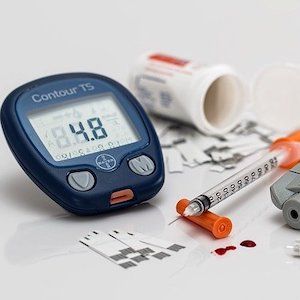Article
Overtreatment Prevalent in Elderly Patients with Type 2 Diabetes
Author(s):
A total of 269 participants were considered potentially overtreated, while 109 participants were appropriately on target, and 56 participants potentially undertreated.

As the prevalence of diabetes rises with the overall aging of the population in the United States, a lack of data on the benefits and risks associated with treatment intensification highlights the potential for harm of overtreatment, as well as the consequences of undertreatment of older adults with type 2 diabetes (T2D).
Due to this, a recent study investigated the potential shift toward the use of newer medicine, with low-risk of hypoglycemia, as well as the characteristics and factors associated with individualized diabetes management focusing on potential overtreatment and undertreatment.
Investigators, led by Labib AL-Musawe, PhD, Faculty of Pharmacy, University of Lisbon, determined potential overtreatment and undertreatment have a higher prevalence among elderly patients with T2D in severe condition.
Methodology
The team performed a cross-sectional study using the administrative database of older adults with T2D of the Portuguese Diabetes Association (APDP), with inclusion of diagnosis of T2D and aged ≥65 years. Patients were required to be registered in 2018 at the APDP.
Further, patients were considered hypertensive if they had blood pressure ≥140/90 mm Hg or were on anti-hypertensive medicines.
Previous research found the harm from HbA1c targets lower than 7.5% or higher than 9% are likely to outweigh the benefit.
In the study, patients were divided into categories including potentially overtreated (HbA1c <7.5%), appropriately on target (HbA1c ≥7.5 - ≤9%), and potentially undertreated (HbA1c >9%).
Investigators used multivariable binary logistic regression to determine overtreatment and undertreatment in comparison to appropriate targets.
Results
A total of 444 older adults with T2D were included in the study, while the potential of overtreatment and undertreatment were found in 60.5% and 12.6% of the population, respectively.
The majority of patients were males with a mean age of 72.9 years, while more than 35% were obese and nearly 60% had ≥10 years of duration of diabetes with mean HbA1c (7.4 ± 1.5%).
In the study, participants were diagnosed with comorbid conditions including hypertension and chronic kidney disease (≥70%) and nearly 50% diagnosed with dyslipidemia, followed by 20% of participants diagnosed with diabetes complications.
A total of 269 participants (60.5%) were considered potentially overtreated, 109 participants (24.5%) were appropriately on target, and 56 participants (12.6%) potentially undertreated.
According to the data, older adults with T2D considered potentially overtreated were frequently males, with a mean age of 72.9 ± 6.4 with 46.1% considered pre-obese. A mean HbA1c was observed at 6.5 ± 1.5%. In addition, older adults with T2D considered undertreated were often female, with a mean age of 71.9 ± 6.4 and 49% were obese. The team observed a mean HbA1c of 10.3 ± 1.5%.
Moreover, 23.2% of patients had macrovascular complications, while 30.3% of patients had microvascular complications. Further, polypharmacy was reported in 42.8% of patients.
Following multivariable logistic regression, data show female gender, FBG, retinopathy, use of insulin, sulfonylureas, and sodium-glucose co-transporter-2 (SGLT2) inhibitors were shown to be statistically significant and may explain potential overtreatment.
Conclusion
The study concluded a low prevalence of the use of newer medicines with low-risk of hypoglycemia was observed in the treatment of elderly patients with T2D, despite guideline recommendations placing these populations at high-risk of adverse outcomes.
“Insofar, the need for ensuring better access to diabetes care, linking glycemic targets to patients’ goals and preferences, minimizing short-term and long-term complications, reducing polypharmacy and improving quality of life still are aims of the utmost importance in the management of diabetes patients,” investigators wrote.
The study, “Overtreatment and undertreatment in a sample of elderly people with diabetes,” was published online in The International Journal of Clinical Practice.




